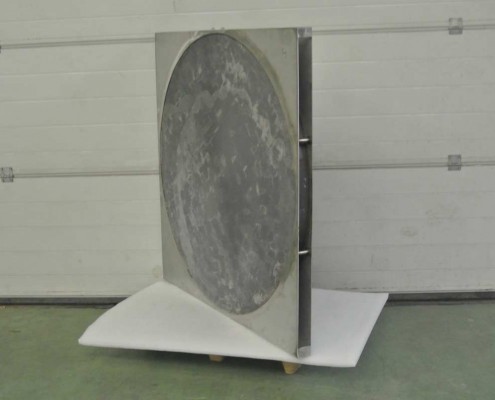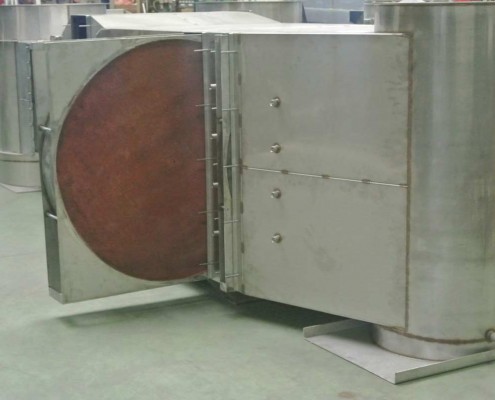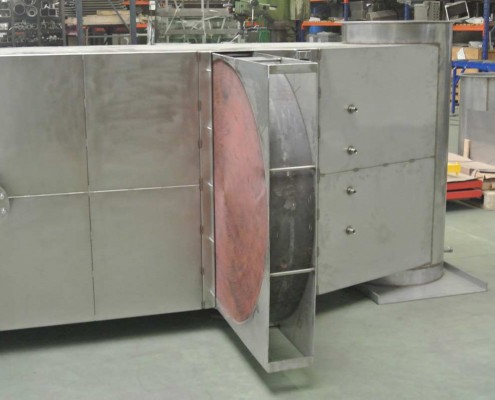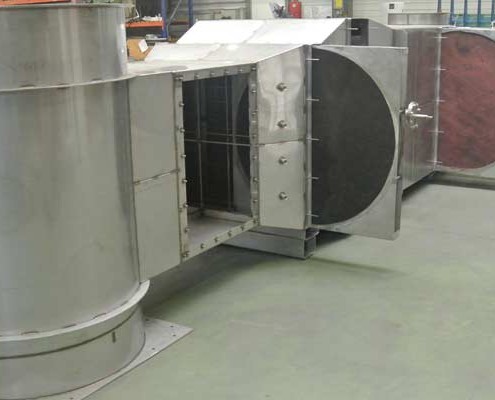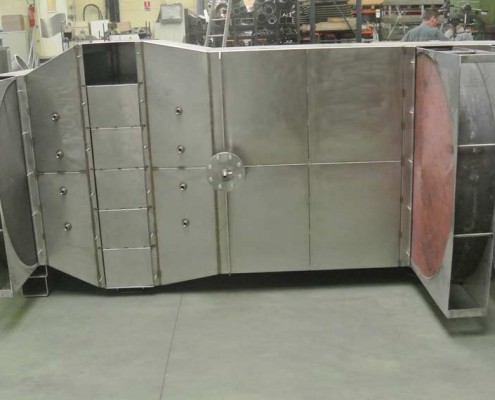Catalytic Substrates
The effectiveness of a catalyst (DOC- SCR- DeNOx) depends on several factors:
- Sizing metal reactors
- Nature of coatings
- Loading of precious metal.
However, the reliability is very related to the manufacturing process of the honeycomb. In particular to the uniformity of its connection with the outer shell.
Metalic monoliths provided by SEV-Services can reach up to 1200mm in diameter.
The standard honeycomb is made of refractory stainless steel sheet of 50 microns thickness.
This is achieved by winding two sheets of metal with alumino – formers properties.
This is mandatory to get a stable and sustainable implementation of the catalytic coating.
Depending on temperature and vibration, and also expected targets, the wall thickness of the honeycomb is between 40 to 100 microns.
During the winding of the honeycomb, one of the 2 sheets passes through a “waffle iron” to obtain cells of different sizes.
The selected cells density (10 to 150 cells per mm²) has a large influence on the back pressure and on the exchange surface with the catalytic coating.
In order to obtain good adhesion with the honeycomb, the outer shell is also made of stainless steel.
The link between honeycomb and outer shell is achieved through a process of vacuum brazing at high temperature.
Thanks to this process coming from aeronautic industry, we can achieve high reliability even under the most difficult conditions.
When the mechanical assembly operation is completed, the monolith is first soaked in a wash coat. Then it is covered with precious metals.
Usually it is Platinum – Rhodium – Palladium. The required loading is determined by our engineers based on engine’s specifications and objectives.
The catalysts are fully recyclable at end of life.


